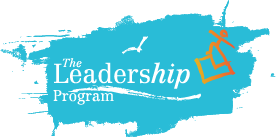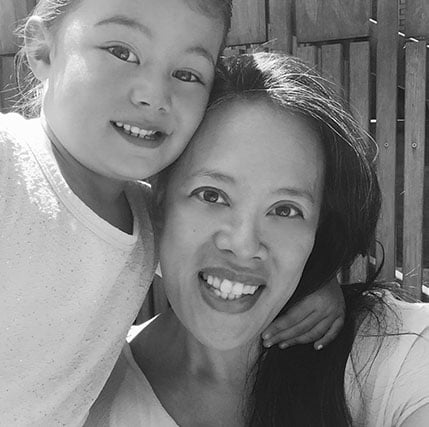I can do this.
I can’t do this alone.
Maybe I can’t do this.

Photo Credit:"Poppies", Susanne Nilsson, https://www.flickr.com/photos/infomastern/
These were my immediate thoughts after watching a video of a friend doing 22 push-ups as part of an awareness campaign around veteran depression and suicide- a social media challenge design to spotlight the fact that 22 veterans a day commit suicide. I was watching the video with my husband, a veteran himself, who then revealed that he had been doing the push-ups every day without sharing them on social media.
I asked him why he wasn’t posting his challenge online, and therefore, how it could raise awareness. He said since he was a veteran, he already knew the issues and it wasn’t really his style to do that anyway.
As his wife, I have had some personal experience with many of the issues that our veterans face as they return to the society that they have served to protect, including their families and homes. After just a faint understanding of what they have survived and continue to survive, it never feels enough to just love them. To me, this challenge seemed like an opportunity to do something, even if they were just push-ups, and I was inspired to bring this awareness to others, on behalf of my husband.
I decided to enlist the help of my amazing colleagues who are always ready to support a cause, accept a challenge and create change. I needed strength in numbers. I looked at my calendar and saw that if we did the push-ups every day of the week, we would finish by Veteran’s Day, a perfect punctuation to the campaign. I planned on recording all of us doing the daily push-ups with an explanation at the beginning that we were doing it in proxy for my husband, and really for all of those like him who were perhaps not publicly participating.
On my journey to 22 push-ups, I learned a few things.
The first was how proud I was to discover I could even do 22 push-ups. The second was my eagerness to show my husband what I, and we had, all done. The third was the vigor and sense of accomplishment I felt when I was doing it with the group.
But there was more, and it wasn’t all positive.
First, I started with a secret fear of being seen by others, and while that was initially quelled by the confidence of being part of a group, it started to come back when I realized that people were watching our videos.
Also, strangely, the pride I felt to share with my husband was also where the fear of disappointment lived. Was I doing them correctly? How did I look? Did the message of my personal campaign mean anything to him? And as he watched the videos, he did comment on the importance of the total commitment made by the group during this challenge, and expressed frustration when it seemed that people weren’t taking it seriously. He pointed out his pride in seeing that when one of our colleagues finished first, he waited in plank until everyone was done.
I also started to wonder why, as the person closest to me, I never asked my husband to do it together.
And finally, unfortunately, what seemed like an inspiring idea at first ended up more like a story of failed leadership. Why? Well- p
It started strong with a few co-workers who were as committed to the challenge as I was every day. Yet even at the start, I didn’t have the courage to be the voice of the cause I wanted to be, and could never give the video introduction to what and why we were doing the challenge. Time and priorities became my competition, and I found I was walking around the office trying to see when we could all get together because I really wanted the strength in numbers. Even as it became more complicated, I kept going. By Day 7, the people in the group started dropping in and out.
On Day 8, I had to leave early and asked my teammate to carry on without me and I would do my push-ups at home separate from them. That evening he texted me that when the others weren’t ready, he forgot about it until he left the office. I tried to get momentum going on 9 and 10, but ended up doing it alone. I failed leading this challenge. My colleague failed my challenge of leadership. And then I failed leading myself.
Without my colleagues, I almost lost a sense of time. Not so much the purpose, but timing and context. I found myself missing a day or two, doubling up on some days. And in one day, even doing 4 days worth just to catch up and finish on time. It seemed like the time to just call it quits, or maybe start over.
I went into shame when things had started to fall apart, and how I kept it a secret. I also stopped talking about it when it all went off track.
But here is the thing: As I was wrestling with the frustration of failure I felt like I met the real challenge. Through my own obstacles and failures, inner monologues of self-doubt, feelings of being let down and also letting down others, it occurred to me that I was able to stand lightly, if just for a second, in the emotional footprint of a veteran.
Go back and look at the underlined words and phrases. As they were part of my journey, they also are part of the experience of a veteran who served, returned, struggled, and hopefully survived. I make no claims to truly understand what any veteran goes through, and all I offer is the understanding through this challenge of a humbling glimpse of how we, and our leadership, fail them every day.
According to the 22Kill website, the number of push-ups done through this campaign as of today it is 59,705,836. No matter how many push-ups I did through this challenge, I know 2 things: I am definitely more aware of the issue of veteran suicide, and somewhere in those numbers my push-ups made a difference.
22 WAYS TO PAY IT FORWARD
1.Know when and what Veteran’s Day is. And the difference between Veteran’s Day and Memorial Day.
2. Find out if there’s anyone in your life who is a veteran and ask them about their time of service.
3. Just say THANK YOU when you can.
4. Get a vet to share their story through the Veteran's History Project with the Library of Congress.
5. Volunteer at a local VA or VSO
6. Know the signs and symbols- yellow ribbon, a candle in the window, blue star flag, a red poppy.
7. Do the #22 pushup challenge to raise awareness or participate in any veteran awareness campaign
8. Watch a film or read an article or book to learn more about the experience of a veteran.
9. Honor a service member through White Star Families.
10. If you are a business owner, offer Veteran discounts.
11. Sponsor a companion dog.
12. .Hire a Veteran
13. Help build Homes for our Troops
14 Give a disabled veteran a ride.
15. Donate your miles so a veteran can go home.
16. Give a hand to a homeless vet – buy them a meal, refer them to a service.
17. Donate a car through Vehicles for Veterans
18. Make a contribution to any VSO or VA
19. Volunteer you financial, legal or career services at MilServe.
20. Grant a wounded warrior’s wish.
21. Support veteran-based legislation.
22. Remember that our veterans are veterans all year long- not just on Veteran’s Day. If you know someone who needs help, lend a hand.
Here is a great resource for military service members to utilize for discounts:
https://decisiondata.org/internet-service-discounts-for-military-service-members/
“A Story of Failed Leadership: 22 Push-Ups, 22 Moments of Understanding and 22 Ways to Pay it Forward “, The Leadership Program, 2016



Comments [0]
Click here to read/write comments